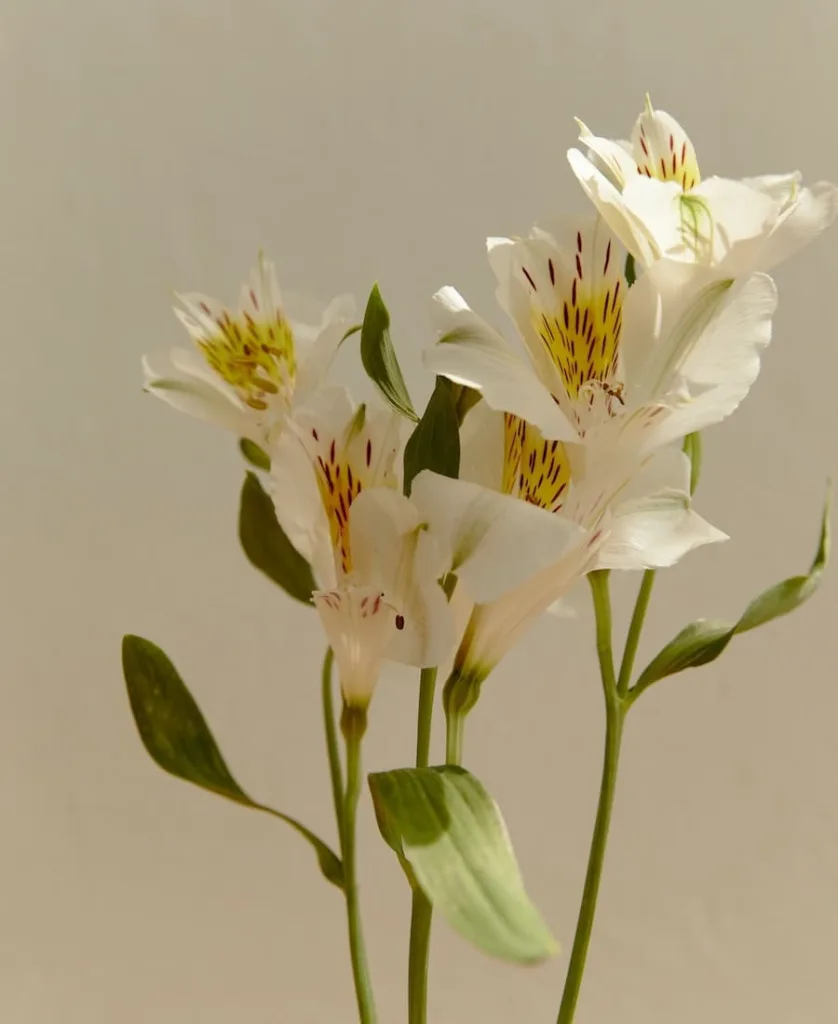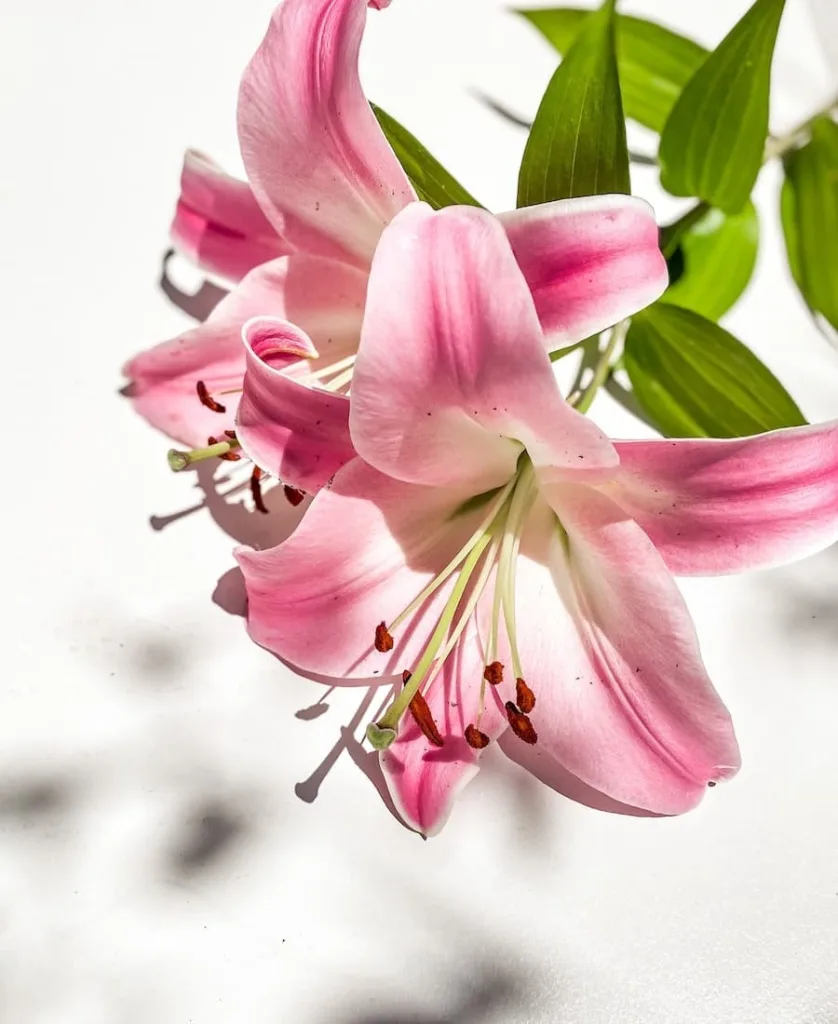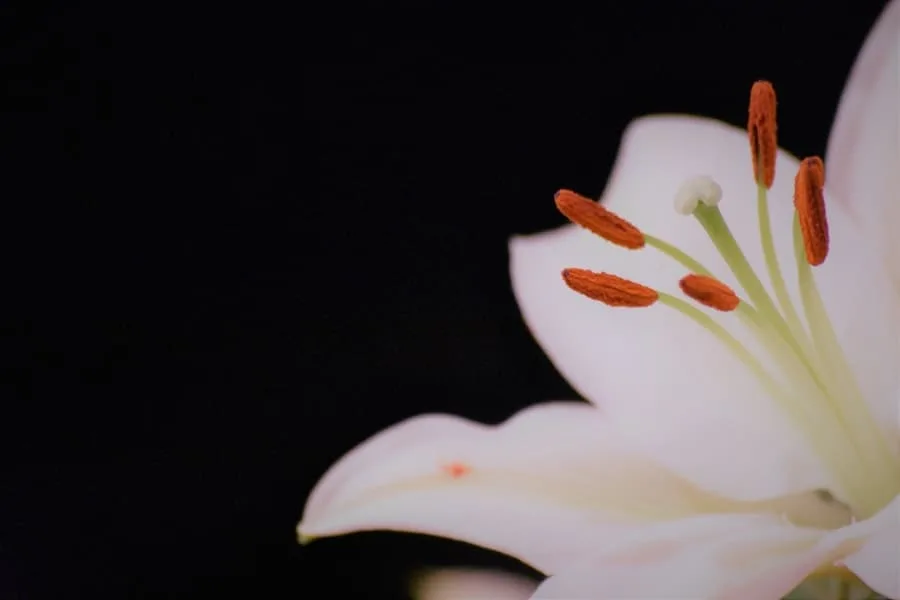Lilies are elegant and delicate flowers that have been admired for their beauty for centuries.
However, they also hold a significant spiritual meaning in various cultures and religious beliefs.
The spiritual meaning of lilies is often associated with purity, innocence, rebirth, and resurrection.
In Christianity, lilies are a symbol of the Virgin Mary’s purity and innocence.
They are also associated with the resurrection of Jesus Christ and are often used during Easter celebrations.
In Buddhism, lilies are believed to represent enlightenment and the attainment of inner peace.
Additionally, lilies are a symbol of fertility and rebirth in ancient Egyptian mythology, where they were associated with the goddess Isis.
Throughout history, lilies have been used to convey various spiritual meanings and symbolisms.
They are often included in religious ceremonies, funerals, and other important events.
Understanding the spiritual meaning of lilies can provide a deeper appreciation for these beautiful flowers and their role in various cultures and beliefs.
Spiritual Meaning of Lily

Lilies have been revered throughout history for their beauty and symbolic significance.
The spiritual meaning of lily varies across cultures and contexts, but it commonly symbolizes purity, innocence, and rebirth.
In many religions, lilies are sacred flowers used in ceremonies and offerings.
In Christianity, the lily symbolizes the purity and divine nature of the Virgin Mary. It is often depicted in religious art and is used in religious ceremonies, such as Easter celebrations.
The Easter Lily is a popular symbol of resurrection and new life in Christian traditions.
In ancient Greek mythology, lilies were linked to the goddess Hera, representing motherhood and rebirth.
This association with motherhood and fertility is also seen in other cultures, where lilies are often used in childbirth rituals and offerings.
Lilies are also associated with love and passion. In the Victorian era, lilies were often given as a symbol of romantic love and devotion.
The different colors of lilies hold different meanings, with white lilies representing purity and chastity, pink lilies representing love and admiration, and red lilies representing passion and desire.
Beyond their symbolism in specific cultures and traditions, lilies are also seen as a symbol of enlightenment and spiritual renewal.
The delicate beauty of the flower is often used to represent the fragility of life and the importance of living in the present moment.
Overall, the spiritual meaning of lily is complex and multifaceted, with different meanings and associations depending on the cultural and historical context.
However, the common themes of purity, rebirth, and spiritual renewal make lilies a powerful symbol of faith and spirituality.
Cultural Interpretations
Lilies have played a significant role in various cultures and religions throughout history.
Different cultures have interpreted the flower’s symbolism in different ways. Here are some cultural interpretations of lilies:
Christianity
In Christianity, lilies are associated with the Virgin Mary and are often depicted in paintings and sculptures of her.
The white lily, in particular, is a symbol of purity, innocence, and the resurrection of Jesus Christ.
The Easter lily, which blooms in the spring, is also closely associated with the resurrection of Christ and is often used in Easter services and decorations.
Buddhism
In Buddhism, lilies symbolize the potential for enlightenment.
The flower’s growth from the mud and its ability to rise above the water to bloom represents the journey of the soul from the material world to the spiritual realm.
Lilies are often used in Buddhist art and literature to represent spiritual growth and enlightenment.
Other cultures
In ancient Egypt, lilies were associated with the goddess Isis and were used in religious ceremonies.
The Greeks also associated lilies with their goddess Hera and used them in wedding ceremonies.
In China, lilies are associated with good luck and prosperity, and are often given as gifts during the Chinese New Year.
Overall, lilies have played a significant cultural role throughout history.
Whether in Christianity, Buddhism, or other cultures, the flower’s symbolism has represented purity, innocence, spiritual growth, and good luck.
Speaking of flowers, see the spiritual meaning of a white daisy.
Lily in Mythology

Lilies have played an important role in mythology and folklore for centuries.
In Greek mythology, the lily was believed to have been created from the breast milk of the goddess Hera, the wife of Zeus and the queen of the gods.
As a result, the lily became a symbol of purity, maternity, and motherhood.
It was also used to represent immortality due to its white color, much like other white flowers such as narcissus and jasmine.
In addition to its association with Hera, the lily was also used in ancient Greece to symbolize the goddess Demeter, the goddess of agriculture, harvest, and fertility.
According to legend, when Demeter’s daughter Persephone was abducted by Hades, the god of the underworld, Demeter searched the earth for her.
As she walked, she carried a torch and a sheaf of wheat, and wherever she stopped to rest, lilies sprang up from the ground.
In Christian mythology, the lily is associated with the Virgin Mary and is often used to represent her purity and divine nature.
According to legend, when the angel Gabriel appeared to Mary to tell her that she would give birth to Jesus, he gave her a lily as a symbol of her purity and innocence.
Throughout history, lilies have also been used in many other cultures and religions.
In ancient Egypt, the lily was associated with the goddess Isis and was used in funerary rituals to symbolize resurrection and rebirth.
In Chinese culture, the lily is a symbol of good luck and prosperity, while in Japanese culture, it is associated with death and is often used in funerals.
Overall, the lily’s role in mythology and folklore varies across cultures and contexts, but it is often associated with purity, innocence, and rebirth.
Its delicate and elegant appearance has made it a popular symbol in art, literature, and religious iconography throughout history.
Symbolic Meanings
Lilies have been used for centuries as symbols of various qualities and concepts. The symbolic meanings of lilies vary across cultures and contexts, but some of the most common meanings include:
Purity and Innocence
The white lily is often associated with purity and innocence. In Christianity, the lily is a symbol of the Virgin Mary’s purity and divine nature.
Rebirth and Renewal
The lily’s association with rebirth and renewal comes from its ability to bloom anew each year.
In ancient Greek mythology, the lily was said to have sprung from the milk of Hera, the queen of the gods, and was therefore associated with birth and motherhood.
Connection to the Divine
Lilies are often used in religious ceremonies and offerings, and are seen as a symbol of the divine. In Buddhism, the lily is a symbol of enlightenment and spiritual development.
Mortality and Death
In some cultures, lilies are associated with death and mourning. The flowers are often used in funeral arrangements and are seen as a symbol of the fleeting nature of life.
Lilies have also been used to symbolize a variety of other concepts, including love, devotion, fertility, and courage.
The symbolic meanings of lilies can vary depending on the color of the flower.
For example, orange lilies are often associated with confidence and courage, while pink lilies are seen as a symbol of love and romance.
Overall, the symbolic meanings of lilies are complex and multifaceted.
They have been used for centuries to represent a wide range of qualities and concepts, and continue to be a popular flower for both religious and secular occasions.
Read the spiritual meanings of smelling flowers.
Lily Colors and Their Meanings
Lilies come in a variety of colors, each with its own meaning and symbolism. Here are the meanings of some of the most popular lily colors:
White Lilies
White lilies are often associated with purity, innocence, and humility. In Christianity, the white lily is closely tied to the Virgin Mary, symbolizing her purity, innocence, and devotion.
The white lily is also known as the “Easter Lily” and is often used to represent the resurrection of Jesus Christ, making it a popular flower during Easter celebrations.
Red Lilies
Red lilies symbolize passion, love, and desire. They are often given as a romantic gift to express deep love and affection. Red lilies can also represent courage, strength, and vitality.
Pink Lilies
Pink lilies are associated with femininity, grace, and admiration.
They are often given as a gift to show appreciation or to express admiration for someone’s beauty or accomplishments. Pink lilies can also represent youth, innocence, and joy.
Yellow Lilies
Yellow lilies symbolize happiness, joy, and new beginnings. They are often given to celebrate a new job, a new home, or a new relationship. Yellow lilies can also represent friendship, loyalty, and trust.
Orange Lilies
Orange lilies symbolize energy, enthusiasm, and confidence. They are often given to express excitement for a new project or to show support for someone’s goals and aspirations.
Orange lilies can also represent success, achievement, and determination.
Purple Lilies
Purple lilies are associated with royalty, nobility, and luxury.
They are often given to express admiration for someone’s accomplishments or to show appreciation for their elegance and sophistication.
Purple lilies can also represent spirituality, wisdom, and creativity.
In general, lilies are often seen as a symbol of purity, innocence, and rebirth.
They are often used in religious ceremonies, especially in Christianity, to represent the resurrection and new beginnings.
Recommended post: 11 spiritual meanings about a white butterfly landing on you.
What do lilies symbolize in the Bible?

Lilies have deep spiritual significance in the Bible, representing various important themes and ideas.
The flower is mentioned numerous times in both the Old and New Testaments, with specific references to its beauty, purity, and divine care.
In the Gospel of Matthew, Jesus speaks to his disciples about God’s provision for their needs, saying, “Consider the lilies of the field, how they grow; they neither toil nor spin, yet I tell you, even Solomon in all his glory was not clothed like one of these” (Matthew 6:28-29, NRSV).
This passage emphasizes the importance of trusting in God’s care and provision, as the lilies of the field are beautifully adorned by God without any effort on their part.
The Song of Solomon also references the beauty of lilies, using them as a metaphor for the beloved in the poem: “I am a rose of Sharon, a lily of the valleys” (Song of Solomon 2:1, NRSV).
This passage highlights the beauty and purity of the beloved, comparing her to the delicate and lovely lily.
In addition to representing beauty and divine care, lilies are also associated with purity and virginity.
The white lily’s most prominent spiritual significance is its representation of purity and virginity, derived from its immaculate white tone, which is often associated with cleanliness and innocence.
Overall, lilies in the Bible symbolize important themes such as beauty, purity, divine care, and trust in God’s provision.
Final Words
In conclusion, the lily is a flower that has been revered for centuries due to its spiritual significance.
It has been used as a symbol of purity, innocence, and resurrection in various cultures and religious beliefs. The lily is also associated with good luck, prosperity, and long life in Chinese culture.
Throughout history, the lily has been used in art, literature, and religious ceremonies. Its elegant and delicate appearance has made it a popular choice for wedding bouquets and other celebrations.
It is important to note that the spiritual meaning of the lily can vary depending on the color of the flower.
White lilies, for instance, are often associated with purity, while yellow lilies symbolize joy and happiness. Pink lilies represent love and romance, while purple lilies are associated with royalty and power.
Overall, the lily is a beautiful flower that holds deep spiritual significance. Its symbolism transcends language barriers and speaks directly to the soul.
Whether used in religious ceremonies or as a decorative element in art and literature, the lily will continue to be a beloved symbol of spirituality for generations to come.








